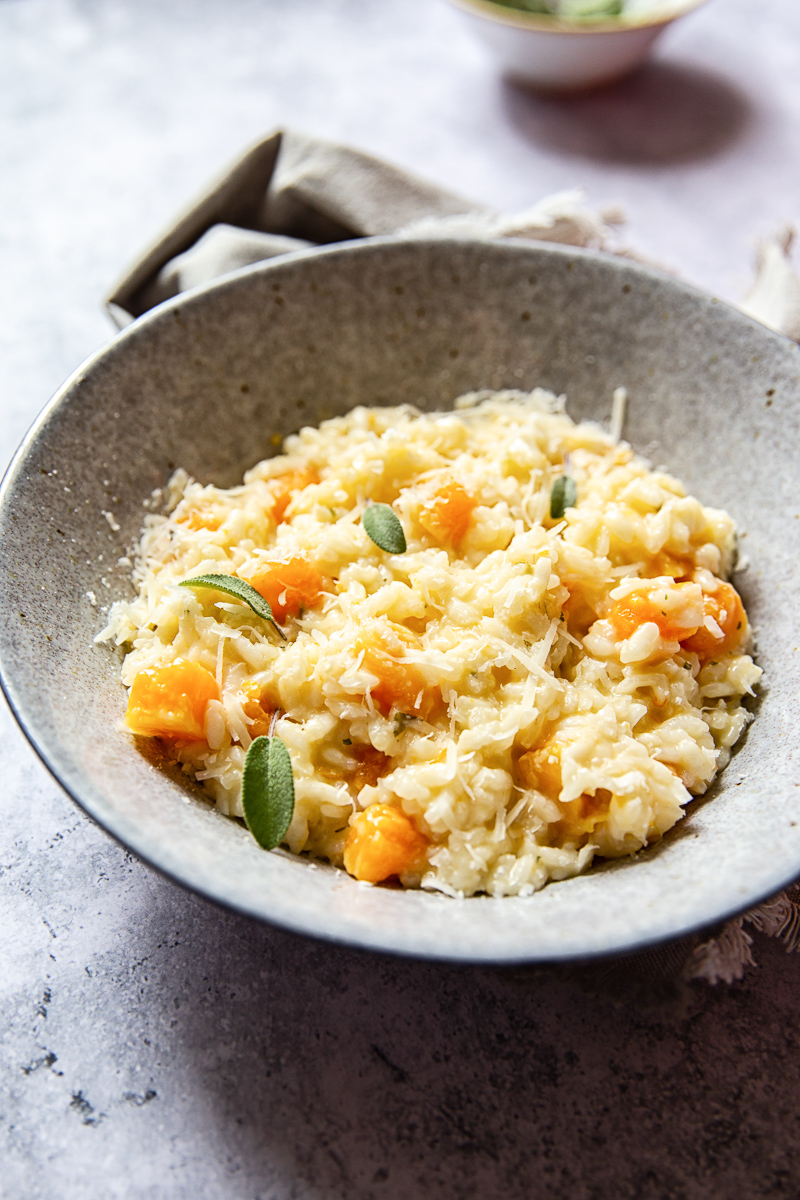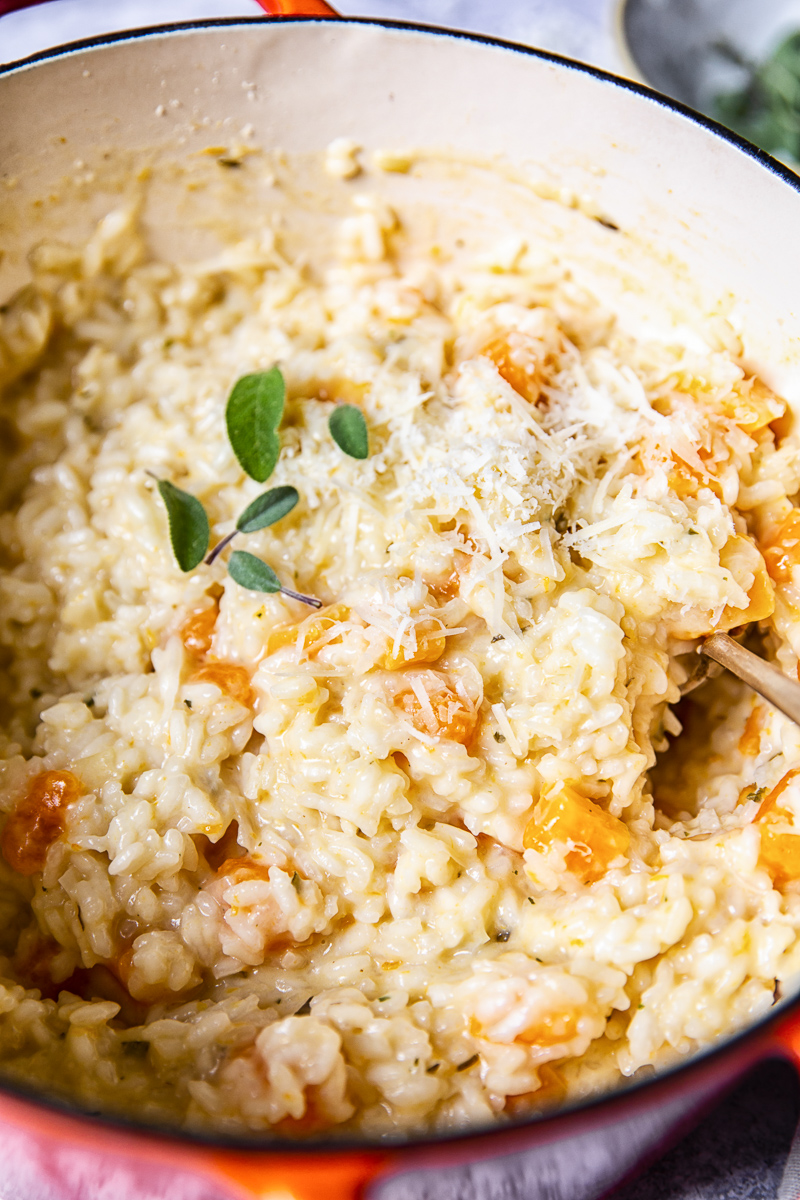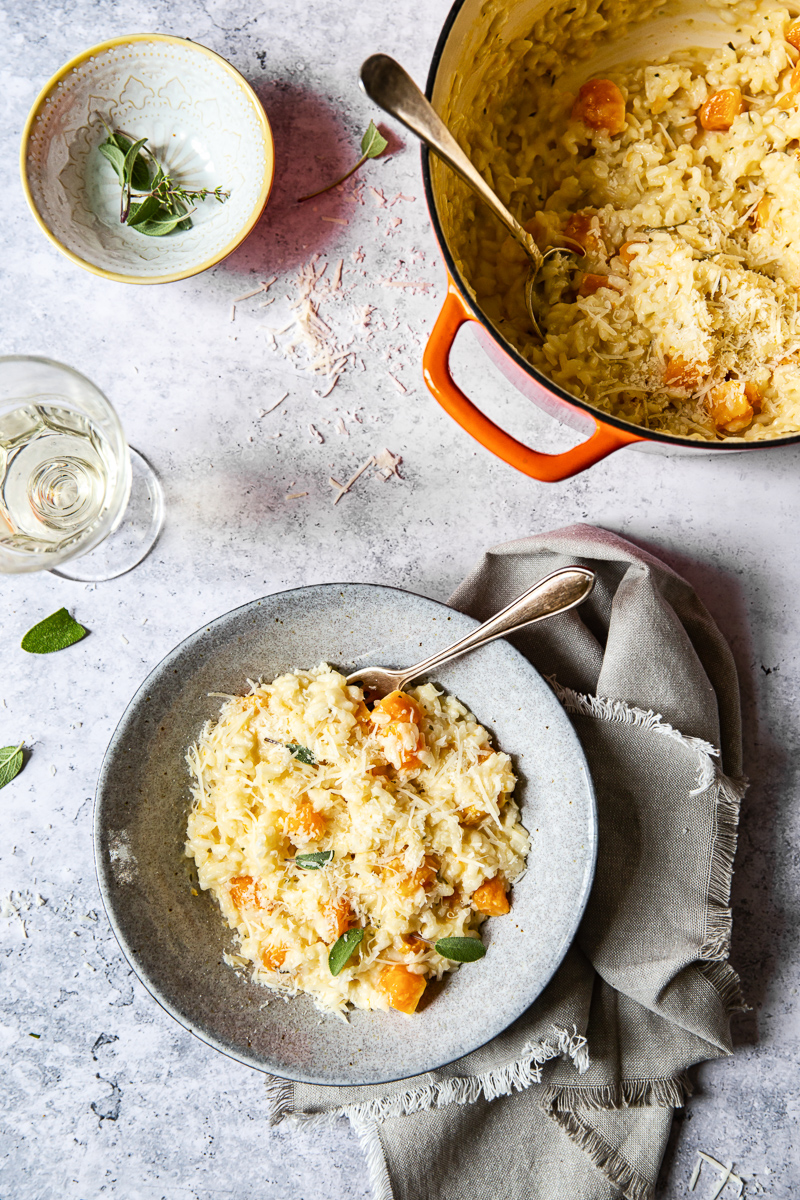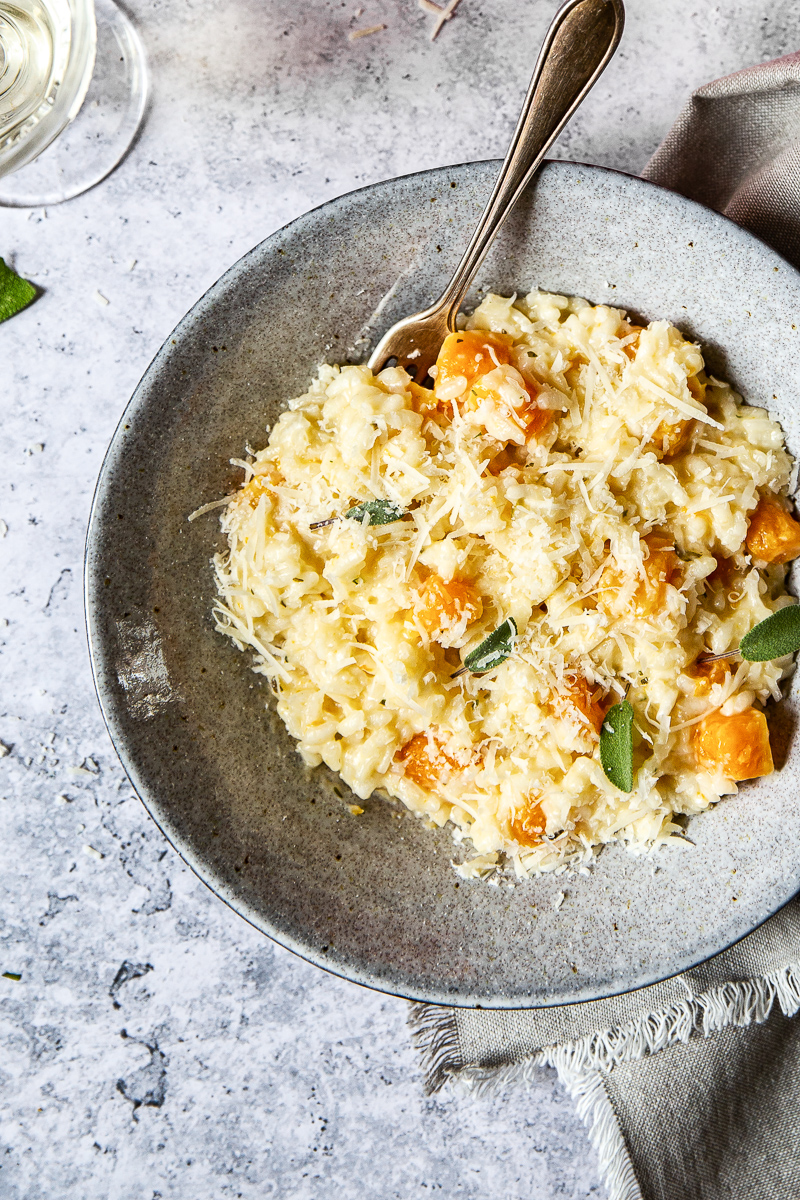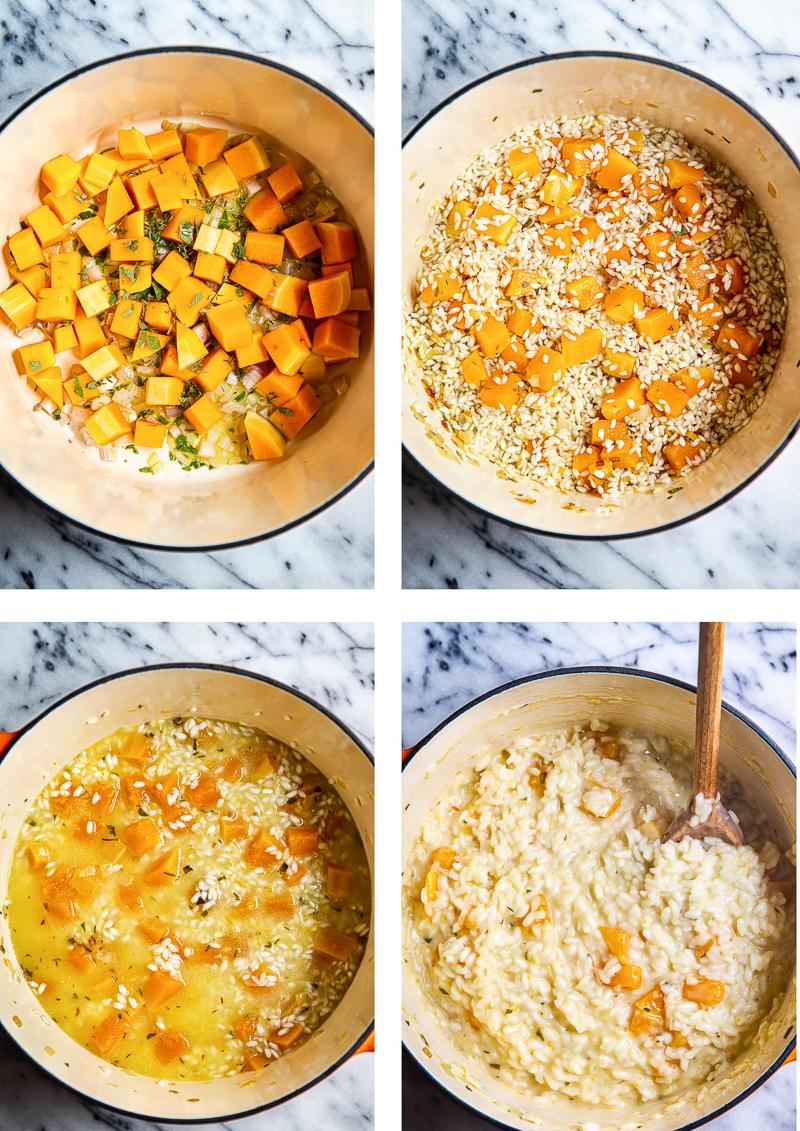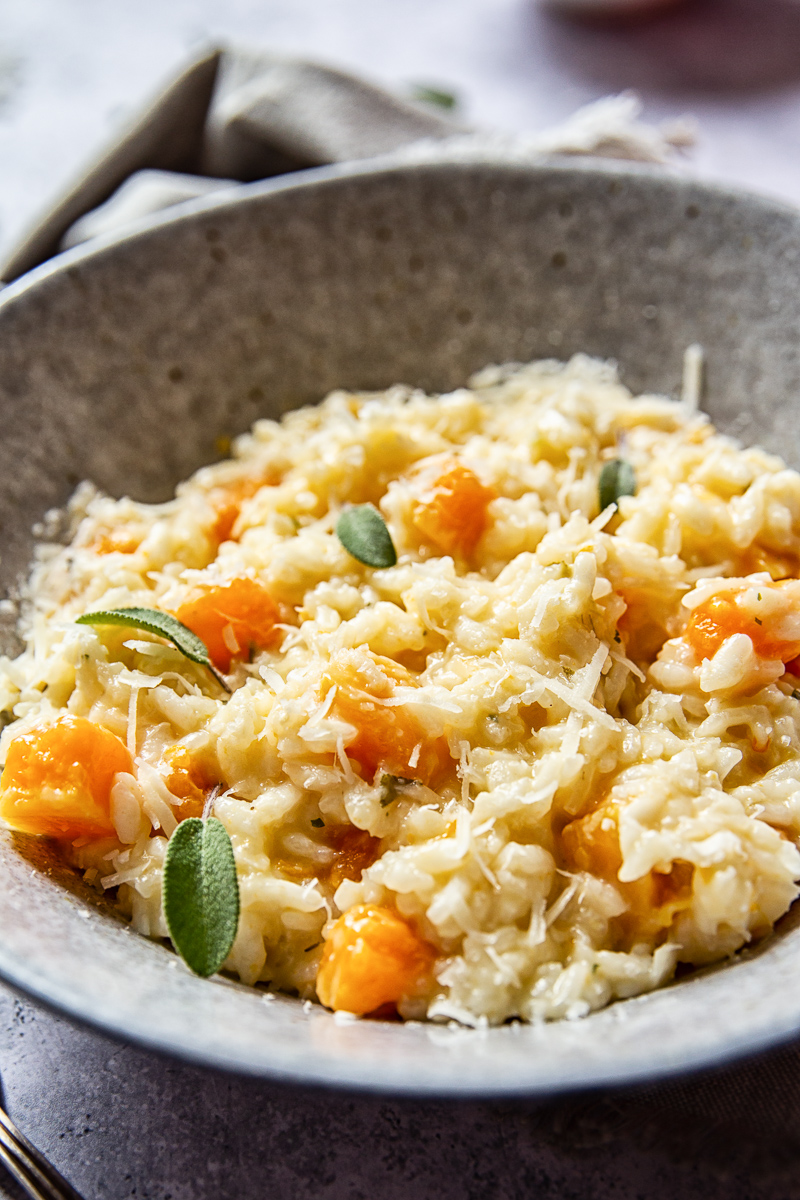For another vegetarian option, take a look at our Spring Asparagus Risotto. As the temperatures outside are only trending colder, I’m increasingly reaching for creamy, warming recipes. One needs to find a way to warm up when a chill settles outside. And my absolutely favourite food to fill my belly with warmth and comfort is risotto. I can’t tell if it’s the butternut squash or the goats cheese that makes this particular risotto so special. Or perhaps the two in combination? I love how the nutty and sweet squash stands next to the sharp goats cheese and creamy risotto. It makes for a surprisingly complex combination that is still a perfectly cozy dish for cold days.
Risotto recipes
There is something truly charming about risotto. It’s a simple dish at heart, but can be made remarkably creamy. The trick is the technique as liquid is added slowly while the risotto stirs. While this is happening, the risotto rice releases starch that creates a velvety sauce. Risotto, like pasta, is a blank slate that can be adapted and changed in countless ways. Once you have the basic technique down, it’s easy to experiment with different flavours. A favourite of mine is Chicken and Mushroom Risotto, a great one pan meal for a busy evening. Or try Prawn Risotto if you are a seafood lover. And pumpkin risotto is one of Italian classics, so no ingenuity on my part here. Here I used seasonal butternut squash instead of pumpkin and upped the creaminess of the dish by adding mild goat cheese. The result far exceeded my expectations. Sweet butternut squash and slightly tangy goat cheese strike just the right balance in this creamy risotto.
Risotto rice
Ignore the temptation to grab just any rice when making risotto. To get that classic risotto creaminess you will need a specific risotto rice, and varieties like basmati or jasmine just don’t yield the right results. The most common form of risotto rice is Arborio. It has short grains and a high starch content that creates a wonderfully creamy sauce. Another traditional variety is Carnaroli. It’s a bit more expensive and harder to find, but is considered the standard for risotto. It provides the creamiest sauce and a bit of firmness when eaten. There are a few other varieties, including Baldo, Maratelli, Padano, Roma, and Vialone Nano, but they are unlikely to be found outside of a specialty store. Importantly, do not wash risotto rice before using it as you would other varieties. Washing removes starch, which is the secret to the smooth sauce.
Recipe Tips and Notes
Use a large pot rather than a pan to make risotto unless you have a special risotto pan that professional chefs use. You need it to be deep enough for the risotto to come out properly creamy. Use risotto rice. The most accessible and affordable rice is Arborio. Carnaroli is another variety of higher quality, but harder to find and more expensive. Do not wash the rice before using. The starch is important for a creamy sauce and is removed by washing. Add a splash of dry white wine or Vermouth to add depth and balance out flavours, so your risotto is not just rich and cheesy but also complex and delicious. Use the best quality stock available. I am not insisting on homemade here since it’s not realistic to always have homemade stock stashed in your freezer. However, it makes a difference to use the best tasting stock to flavour your risotto.
Risotto is known for being a fussy recipe due to “constant stirring”. I think this is a huge exaggeration. I stir for about 30 seconds every time I add a ladleful of stock and let the risotto bubble away on its own most of the time. The texture of a perfectly cooked risotto should be pretty loose. It should ripple rather than hold shape when poured in a bowl. The rice should be cooked but still have a bite to it. If it’s soft like rice pudding, it’s overcooked. Cook the risotto on medium heat in order to maintain constant simmering. Don’t forget to salt when you add each ingredient. Then at the end taste it and adjust the seasoning if needed. Risotto needs quite a lot of salt for the flavours to come through. Even off the heat your rice continues to absorb stock. At the end of cooking time if you find your rice too dry but you are out of stock, just add a bit of boiling water and stir.
Substitutions
Use dried herbs instead of fresh ones. Sage goes particularly well with butternut squash and pumpkin but could be easily substituted with rosemary. Use cream cheese instead of goat cheese. Add pieces of rotisserie chicken, bacon or even chopped up chorizo to make this butternut squash risotto a non-vegetarian version. It is difficult to truly replace vermouth or white wine in a risotto, but if you must it is possible to use 1 tbsp of white wine vinegar.
Serving suggestions
Risotto is often seen as a side dish, but it’s quite hefty so I think it works perfectly as a main. In Italy, it is traditionally served as a first course before a meat dish reaches the table, similar to pasta. If you are serving it as a main dish, all you really need is a side salad. I reach for fresh salads and vinaigrettes to cut through the creamy risotto. My recommendations are a Tomato Salad with Herb Vinaigrette and Feta or Tuscan Panzanella Salad. Or for an even more Italian option, go with Caprese Salad!
Storage and leftovers
Risotto is wildly popular in my house, so its rare that we’ll have much, if any, leftovers. But if you find yourself with a bit extra, it will keep well if covered tightly and kept in the fridge. Eat it within 3-4 days. Risotto will tend to thicken when stored and leftovers can become a bit stodgy. If reheating, try adding a couple tablespoons of water per cup of risotto to loosen the sauce. While it can be reheated in a microwave, it’s best done in a saucepan over medium heat. Be sure to stir it often.
